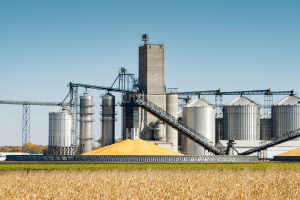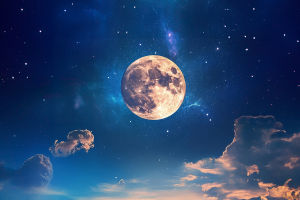We all live in the vast solar system, a family led by the Sun. Around the Sun, eight major planets, five dwarf planets, and countless other objects like asteroids, comets, and moons travel in space.
The story of how this system formed goes back 4.6 billion years, when a huge cloud of gas and dust collapsed under gravity. This created a spinning disk—at its center, the Sun was born, and farther out, clumps formed that eventually became planets and other bodies.
The Eight Planets: From Mercury to Neptune
The eight planets are arranged from closest to farthest from the Sun: Mercury, Venus, Earth, Mars, Jupiter, Saturn, Uranus, and Neptune. These planets fall into two groups based on their makeup. The inner planets—Mercury, Venus, Earth, and Mars—are rocky with solid surfaces, warmer temperatures, few moons, and no rings. The outer planets—Jupiter, Saturn, Uranus, and Neptune—are giant gas or ice worlds, colder with thick atmospheres, many moons, and stunning ring systems.
Dwarf Planets: The Smaller Siblings
Besides the eight big planets, five dwarf planets share the solar system: Pluto, Ceres, Eris, Haumea, and Makemake. These bodies are large enough to be round but share their orbits with other objects, so they’re not full-fledged planets. Pluto used to be called the ninth planet, but in 2006 it was reclassified as a dwarf planet, sparking much debate.
Mercury: The Tiny Sun Neighbor
Mercury is the smallest planet and closest to the Sun. It’s about 4,879 km across—only 38% of Earth’s size. Mercury’s orbit is very oval-shaped, meaning its distance from the Sun changes a lot. It orbits the Sun in 88 days, but spins slowly, taking about 59 days for one rotation. That means one day on Mercury lasts about 176 Earth days!
Mercury’s surface temperature swings wildly—up to 427°C during the day and down to -173°C at night—because it barely has an atmosphere to hold heat. Its surface is pocked with many impact craters, much like our Moon. Mercury is tricky to see from Earth since it stays close to the Sun, only visible shortly after sunset or before sunrise.
Venus: The Hottest Planet
Venus is the second planet from the Sun and Earth’s closest neighbor, almost the same size as Earth. It orbits every 225 days but rotates in the opposite direction very slowly, taking 243 days for one spin. A Venus day is longer than its year!
Venus is the hottest planet, with surface temperatures averaging 462°C. This extreme heat is due to its thick carbon dioxide atmosphere, which traps heat like a greenhouse. Its clouds are made of sulfuric acid, reflecting sunlight and making Venus very bright in our sky, earning it the nicknames “Morning Star” and “Evening Star.” Venus’s landscape includes plains, plateaus, and massive volcanoes like Maxwell Montes, which towers 11 km high.
Earth: Our Home in Space
Earth is the third planet and the only one known to support life. It’s a bit larger than Venus and orbits the Sun in about 365 days, spinning once every 24 hours. Earth’s balanced atmosphere, mostly nitrogen and oxygen, protects us and keeps temperatures comfortable.
Water covers 71% of Earth’s surface, forming oceans, lakes, and rivers — essential for life. The land includes mountains, plains, and deserts with rich ecosystems. Earth has one natural satellite, the Moon, which influences tides and lights up our night sky. The Moon always shows the same face to Earth due to synchronized rotation and orbit, and it features extreme temperatures and many craters.
Mars: The Red Mystery
Mars, the fourth planet, is smaller than Earth but similar in many ways. Its orbit is more elongated, and it takes almost two Earth years to circle the Sun. Mars’s day length is close to Earth’s at about 24.6 hours.
Mars is much colder, averaging -63°C, with a thin carbon dioxide atmosphere. Its surface has deserts, valleys, and the tallest volcano in the solar system, Olympus Mons, standing 22 km high. Signs of past water, like riverbeds and ice caps, hint at the possibility Mars once had life.
Mars has two tiny moons, Phobos and Deimos, shaped like potatoes and covered in craters. Mars has been a key focus of space missions, and humans plan to explore it more directly in the future.
Jupiter: The Giant King
Jupiter is the biggest planet, over 11 times wider than Earth. It orbits the Sun once every 12 years but spins rapidly, completing a day in just under 10 hours—the shortest day in the solar system.
Jupiter’s thick atmosphere mostly contains hydrogen and helium, with powerful storms like the Great Red Spot, a massive hurricane three times Earth’s size lasting for centuries. Unlike rocky planets, Jupiter has no solid surface; it’s mostly gas and liquid.
Jupiter has 79 moons, including four large ones called the Galilean moons. Io, the innermost, is the most volcanically active body in the solar system, with lava eruptions reaching hundreds of kilometers high.
Saturn: The Beautiful Ringed World
Saturn is famous for its spectacular rings made of ice and dust. It’s the second-largest planet, nearly 10 times Earth’s diameter, with a day lasting about 10.7 hours. Its rings extend far but are very thin, giving it a breathtaking appearance.
Saturn’s atmosphere is mostly hydrogen and helium and features storms like the long-lasting hexagonal cyclone at its north pole. Saturn has 145 known moons, including Titan, larger than Mercury and covered with lakes of methane.
Titan’s icy surface and dense atmosphere make it a fascinating place, with signs of possible underground oceans and volcanic activity.
Uranus: The Tilted Ice Giant
Uranus is the seventh planet and unique for its extreme tilt—rotating almost on its side. This tilt causes extreme seasons lasting decades. Uranus is about four times Earth’s size, with a day lasting 17 hours and a very long orbit around the Sun (about 84 Earth years).
Its atmosphere is cold and filled with hydrogen, helium, and methane, giving it a blue-green color. Uranus has 27 moons, including Miranda, which may have a subsurface ocean of ammonia water.
Neptune: The Distant Blue Giant
Neptune, the eighth planet, is similar to Uranus but farther from the Sun. It takes about 165 Earth years to orbit the Sun. Neptune’s day lasts about 16 hours, and its atmosphere is home to massive storms like the Great Dark Spot.
Neptune has 14 moons, with Triton being the largest. Triton is geologically active, with icy volcanoes and a possible ocean beneath its surface. Both Neptune and Triton’s cold, distant worlds are still mysterious and exciting targets for future exploration.
Our Cosmic Neighborhood
By exploring these planets and their moons, we learn not just about our solar system’s structure but about how planets form, change, and maybe even support life. The wonders of Mercury’s extremes, Venus’s heat, Earth’s life, and the giants’ mysteries inspire us to keep looking up and dreaming big.
What’s your favorite planet or fact? Let’s keep exploring this incredible solar system together!
How to Remember the Order of the Planets Starting from the Sun | FUN & EASY Solar System mnemonic
Video by Fundamental Raps


